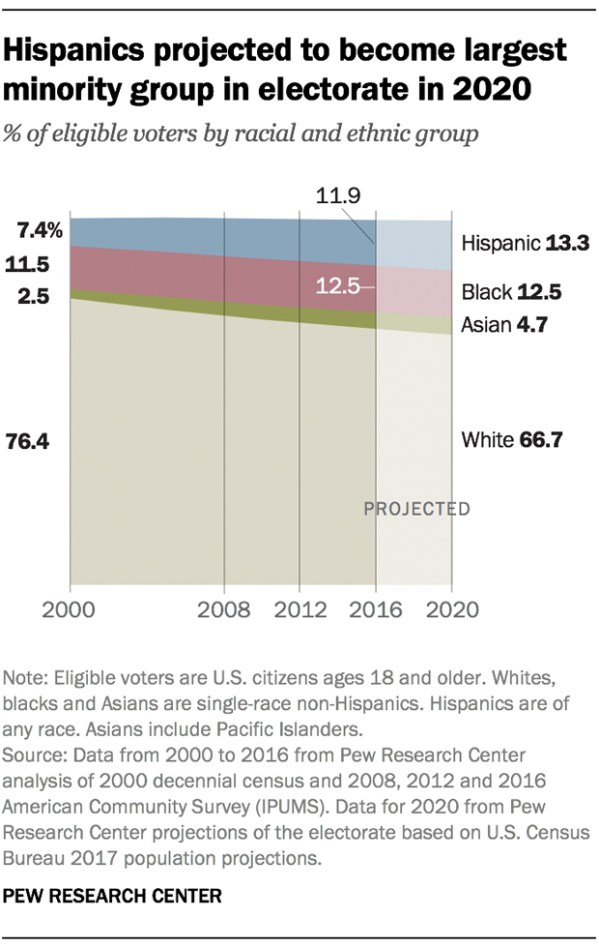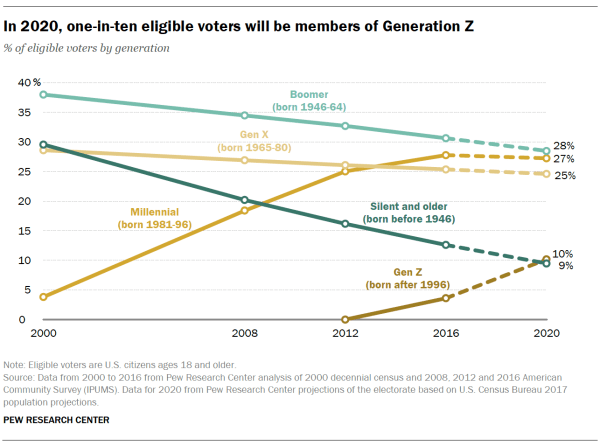Senator Mark Warren (D-VA) has a novel proposal to end shutdowns, not just once, but forever. As Sam Stein reports at The Daily Beast: “And then there’s the “Stop Stupidity (Shutdowns Transferring Unnecessary Pain and Inflicting Damage In The Coming Years) Act.” The mangled-acronym inspired bill was introduced this week by Sen. Mark Warner (D-VA). It takes the keep-things-level-approach [via a continuing resolution] and offers a twist. In lieu of a failure by lawmakers to reach a spending deal, the current funding levels of the government would automatically continue — except for those monies meant to pay members of the legislative branch and the office of the president.” Of course, the CR should be indexed for inflation. But if we get another temporary fix, or no agreement, maybe it’s time for a nation-wide petition/citizen lobbying campaign for an automatic CR trigger that kicks in absent an agreement by a specific date.
The Green New Deal being proposed by Democrats Alexandria Ocasio-Cortez (NY-14) and Senator Ed Markey (MA) is being greeted with both applause and skepticism. Applause because it’s about time somebody cranked up public debate in support of an environmentally-responsible infrastructure initiative, which is really the heart of the GND. Credit Ocasio-Cortez with making good use of her popularity in advancing discussion of these two critical priorities, which deserve more serious media coverage. Skepticism because it is extremely broad and isn’t going anywhere until Dems win a Senate majority and the White House. But despite the GOP’s cheap shots directed at the GND, successful reform movements begin early and a great political party needs to stand for a big vision. At this point, it’s a resolution, not a bill. As a practical matter, the GND would be honed and broken down into more detailed specific measures to be enacted in digestible bites over a realistic period of time.
However, Jonathan Chait offers some more substantial criticism of the proposal in his post, “Democrats Need an Ambitious Climate Plan. The Green New Deal Isn’t It” at New York Magazine. An Excerpt: “The operating principle behind the Green New Deal is a no-enemies-to-the-left spirit of fostering unity among every faction of the progressive movement. Thus, at the same time, the plan avoids taking stances that are absolutely vital to reduce carbon emissions, it embraces policies that have nothing to do with climate change whatsoever. The Green New Deal includes the following non-climate provisions: –A job with family-sustaining wages, family and medical leave, vacations, and retirement security…–High-quality education, including higher education and trade schools…–High-quality health care…–Safe, affordable, adequate housing…–An economic environment free of monopolies…–Economic security to all who are unable or unwilling to work.”
“Sixty-three percent of Americans believe “upper income people” pay too little in taxes, according to a new survey from Morning Consult. The poll also found that 61 percent of Americans either “strongly” or “somewhat” favor 2020 Democratic presidential candidate Elizabeth Warren’s tax plan, which would levy a new tax on households with a net worth of $50 million or more. The pollster found less enthusiasm for the idea that Democratic Rep. Alexandria Ocasio-Cortez of New York floated recently to tax income that exceeds $10 million a year at a rate of 70 percent — but more on that in a moment.” — from Geoffrey Skelley’s “Most Americans Support Warren’s ‘Ultramillionare Tax’: How they feel about hefty taxes on the rich depends on what you call them” at FiveThirtyEight.
Skelley notes further, “However, even though the public has long thought the rich don’t pay enough in taxes, Americans are comparably cooler toward the concept when it’s framed as income redistribution, which Warren and Ocasio-Cortez have both embraced as a way of combating wealth inequality. For example, in 2016, Gallup found that 61 percent of the public felt that wealthy people didn’t pay enough, but only 52 percent said they believed the government should redistribute wealth through “heavy taxes on the rich.” The difference gets at a common disconnect in how people think of taxation and wealth redistribution — both processes that collect a portion of residents’ income and use it to benefit others — and how different terms can produce seemingly inconsistent answers from poll respondents.”
Regarding the mess in Virginia, Amanda Sakuma writes at vox.com: “Virginia residents are at an impasse over whether they feel Gov. Ralph Northam should step down after a racist photo from his past caught up with him last week, though a majority of black voters say they have still his back, according to new polls released this week…The overall divide is an even split: 47 percent of Virginians want to see him stay; 47 percent want to see him go, according to a Washington Post-Schar School poll released Saturday. But what’s significant about the poll results is the racial breakdown of Northam’s support: Even after the governor admitted to using shoe polish to wear blackface in the 1980s, black Virginians still support him more than whites…Roughly 58 percent of African Americans polled said Northam should remain in office, compared to 46 percent of whites who said the same.” There is no polling data yet on how Virginians feel about whether or not Lt. Governor Justin Fairfax should resign as a result of recent allegations of sexual assault against him.
If the Trump Administration wants to keep the Mueller report on Russian interference in the 2016 U.S. election private, they will have to buck an overwhelming majority of Americans who want it made public. As Geoffrey Skelley reports in “other Polling Nuggets” at FiveThirtyEight “According to a CNN/SSRS survey, 87 percent of Americans want a report that includes the findings from special counsel Robert Mueller’s investigation into Russian meddling in the 2016 election to be made public. Nine percent said the report does not need to be made public. And this desire bridges the partisan divide: 92 percent of Democrats, 88 percent of independents and 80 percent of Republicans said investigators should issue a public report.”
A hopeful closing note from Bob Moser’s “A New South Rising: This Time for Real: The midterms made clear that progressive candidates can retake the region with young and minority voters” at The American Prospect: “The urban centers of the Sun Belt won’t stop growing, and becoming more diverse and more progressive, any time in the foreseeable future. The rural South is as stagnant as the rest of rural America—and increasingly, in a state like Texas, that’s all the Republicans will have. One of the most startling assessments of the new reality that I’ve seen recently came from Brandon Rottinghaus, a political scientist at the University of Houston. “If Republicans can’t keep Democratic numbers below 60 percent in urban Texas, winning elections is going to be much more difficult going forward.” Let that sink in: Republicans in Texas, the country’s largest Republican redoubt, reduced to cooking up ways to hold the Democratic vote in Dallas, Houston, Austin, and San Antonio below 60 percent…That, my friends, is not a political shake-up. It’s an earthquake. And the reverberations will be felt for generations to come.”











